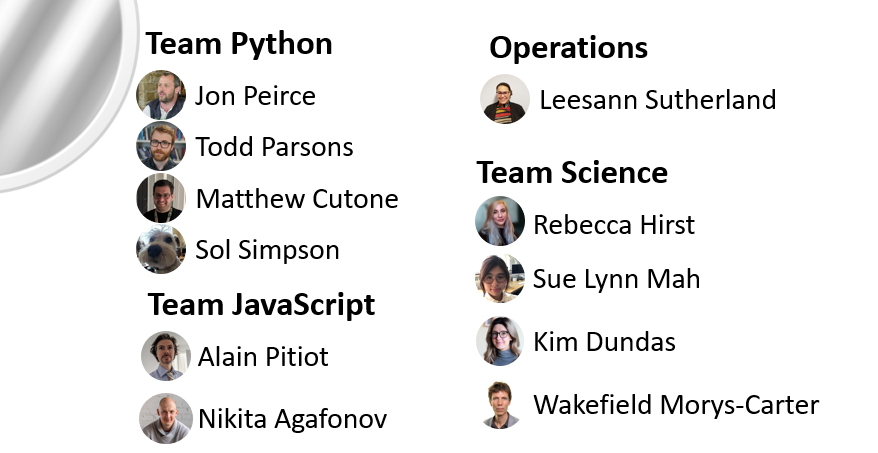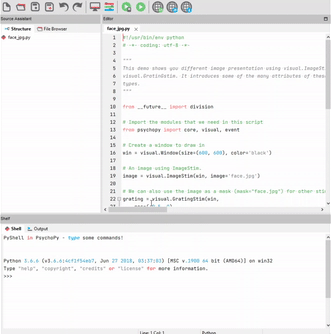PsychoPy is an Open Source project, the users have access to the code and can contribute at any time! That kind of means the team is technically huge!

In terms of the “core team” , thanks to Pavlovia users and grants we can now fund staff to work on developing the tools and supporting users.

We can’t teach you all of PsychoPy. This intro is aimed to give you a basic intro and inspire ideas on what’s possible.
It’s Psychology software in Python
PsychoPy is a Python library, an script editor (Coder) an application with a GUI (Builder)
2002-2003: Jon began work on this for his own lab (visual neruoscience)
2003-2017: a purely volunteer-driven, evenings and weekends project
2017-now: still open source and free to install but with professional support (funded by grants and Pavlovia)
The aim is to enable scientists to run as wide a range of experiments as possible, as easily as possible, with standard computer hardware.
precise enough for psychophysics
intuitive enough for undergraduate psychology
flexible enough for everything else
capable of running studies in the lab or online
It’s hard to make something easy enough for undergrads and novices but flexible enough for everything else.
PsychoPy provides two main options, coder view and builder view. But you can also use code inside builder view - which is what we recommend.

The Coder view is used to create experiments from Python scripts¶

The Builder view is used to create experiments visually¶
To implement more complex experimental designs/procedures(?)
To know exactly what the code is doing(?)
To break out of the “trials/blocks” structure or drawing loop cycle
To program things that aren’t psychology experiments. (e.g. stats, simulations, analyses etc.)
It is far faster to develop experiments!
You can still understand (and build on) your experiment next year
You’ll probably have fewer bugs
Code Components can be used in nearly all places where Builder isn’t enough
Your Builder experiment will also compile to a web (JS/HTML) experiment!
Our experiments are almost always in Builder, with added Code Components. I don’t ever break out and switch to pure code.
I do use code for other things, like making my ‘conditions’ .csv files, making stimuli and customizing the experiments.
PsychoPy is changing rapidly, especially now it has full-time programmers
You don’t want your study to change part-way through, but you do want to be able to update your software
PsychoPy experiments have a setting called useVersion that works for Builder/Python/JS experiments. Ideally:
Install the latest stable version
Develop your experiment in that
When you start running “for real” set the useVersion to the specific version you tested on
Building Experiments in PsychoPy (Second Edition) by Peirce, Hirst and MacAskill (2022, Sage Publications)
Programming Visual Illusions for Everyone by Marco Bertamini (2017, Springer)
Python for Experimental Psychologists by Edwin Dalmaijer (2017, Routledge)
So, let’s go on and learn some Building better experiments…